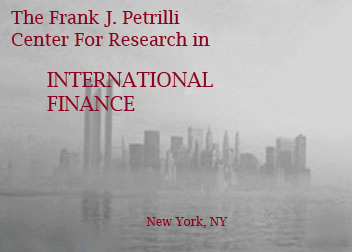Disciplines
Finance and Financial Management
Abstract
Dynamic term structure models (DTSMs) price interest rate derivatives based on the modelimplied fair values of the yield curve, ignoring any pricing residuals on the yield curve that are either from model approximations or market imperfections. In contrast, option pricing in practice often takes the market observed yield curve as given and focuses exclusively on the specification of the volatility structure of forward rates. Thus, if any errors exist on the observed yield curve, they will be carried over permanently. This paper proposes a new framework that consistently prices both interest rates and interest rate derivatives. In particular, under such a framework, instead of making a priori assumptions, we allow the data on interest rates and interest rate derivatives to dictate the dynamics of the yield curve residuals, as well as their impact on the pricing of interest rate derivatives. Specifically, we propose an m+n model structure. The first m factors capture the systematic movement of the yield curve and hence are referred to as the yield curve factors. The latter n factors are derived from the residuals on the yield curve and are labeled as the residual factors. We estimate a simple 3+3 Gaussian affine example using eight years of data on U.S. dollar LIBOR/swap rates and interest rate caps. The model performs well in pricing both interest rates and interest rate derivatives. Furthermore, we find that small residuals on the yield curve can have large impacts on the pricing of interest rate caps. Under the estimated model, the three Gaussian yield curve factors explain over 99.5 percent of the variation on the yield curve, but only account for less than 25 percent of the variation in the cap implied volatility. Incorporating the three residual factors improves the explained variance in cap implied volatility to over 95 percent. We investigate the reasons behind the “amplification” of yield curve residuals in pricing interest rate derivatives and find that the yield curve residuals are a recurring phenomenon, not a one-time event. Hence, the dynamics of the residuals influence option prices even if the current residual level is zero. We also find that the residuals concentrate on the two ends of the yield curve and are more transient than the original interest rate series, both of which, we argue, contribute to the amplification effect.
Recommended Citation
HEIDARI, MASSOUD and WU, LIUREN, "Term Structure of Interest Rates, Yield Curve Residuals, and the Consistent Pricing of Interest Rates and Interest Rate Derivatives" (2002). CRIF Working Paper series. 27.
https://research.library.fordham.edu/crif_working_papers/27

